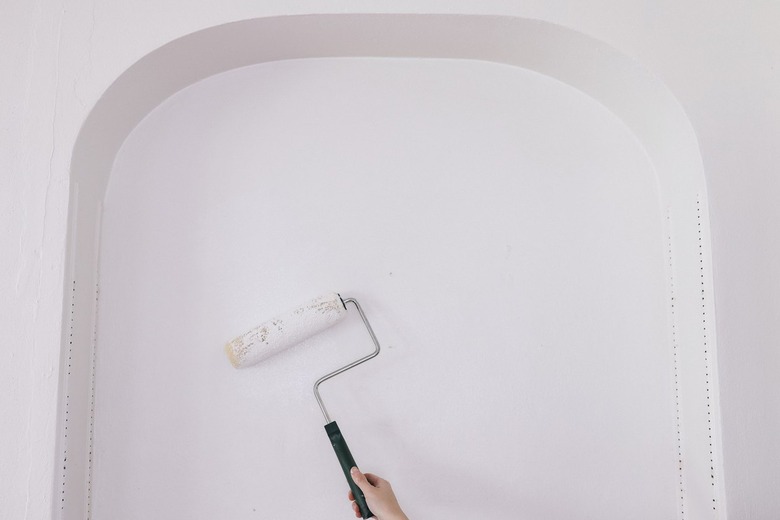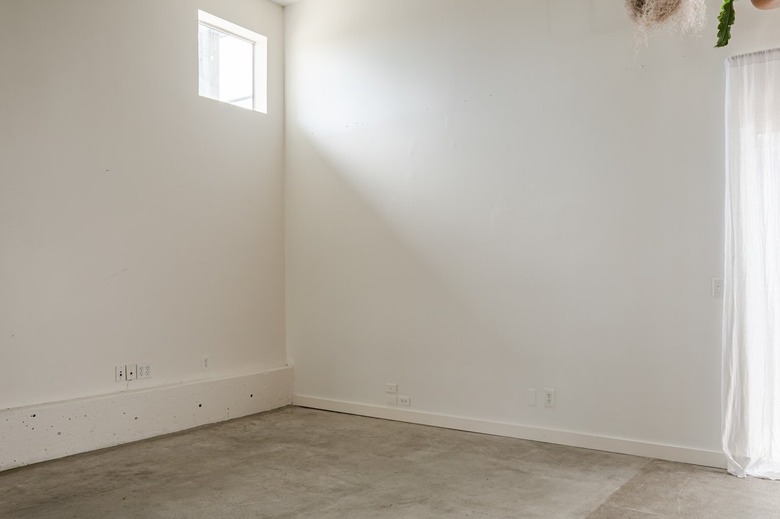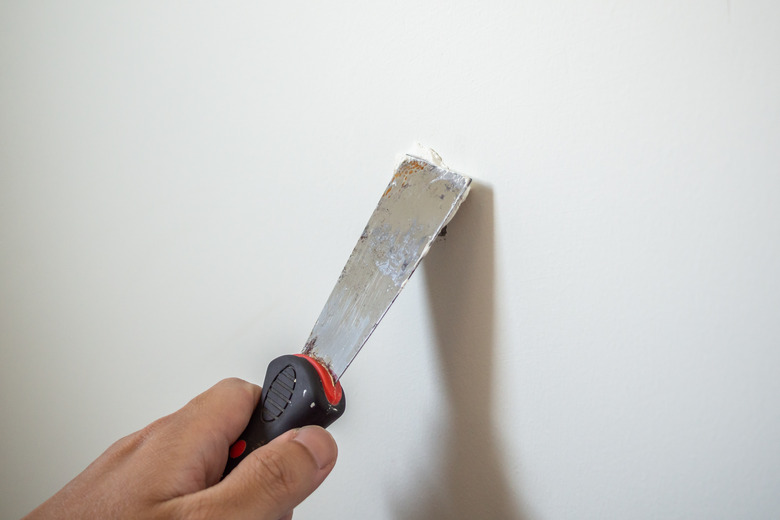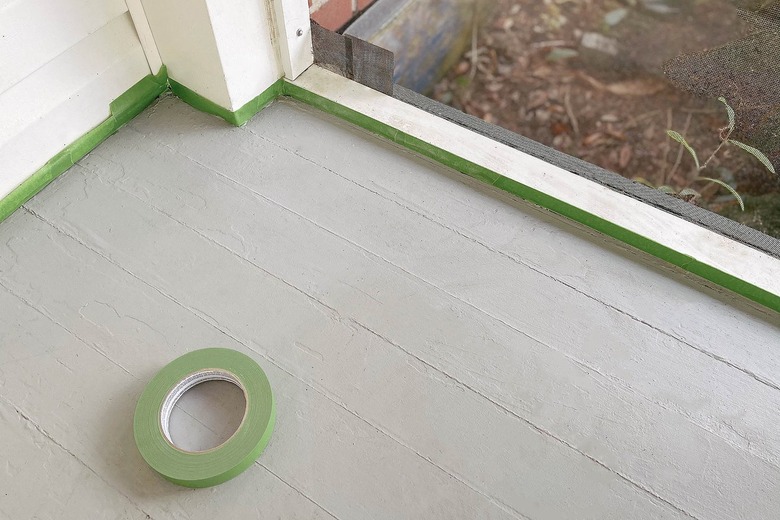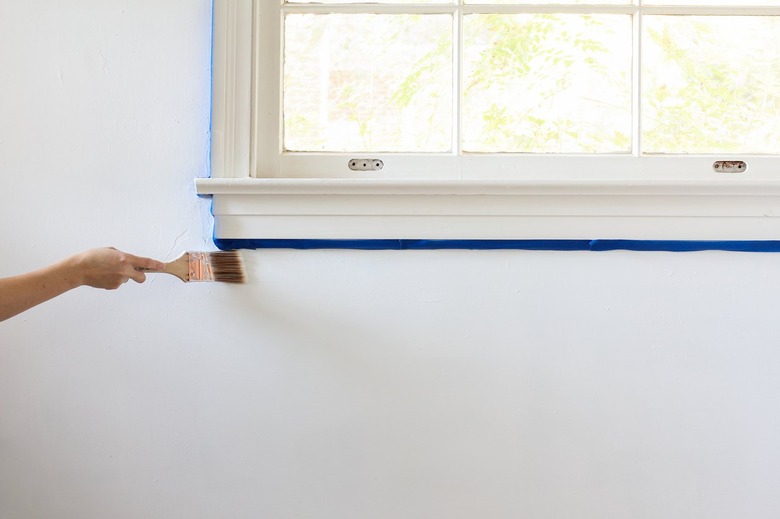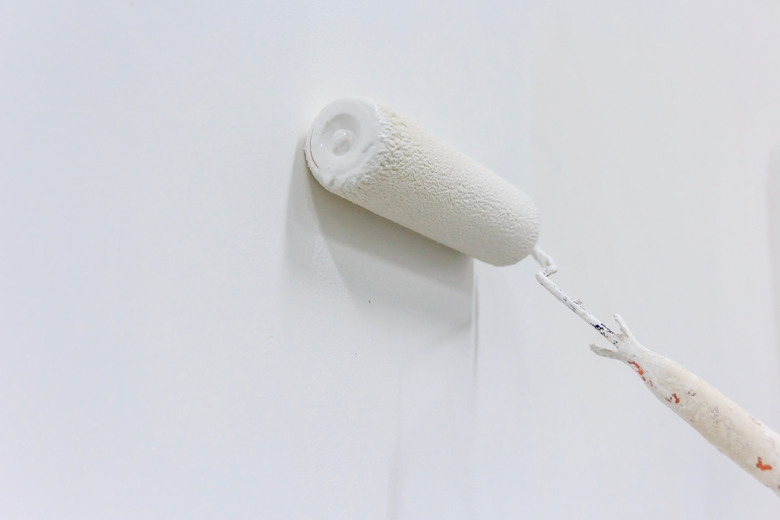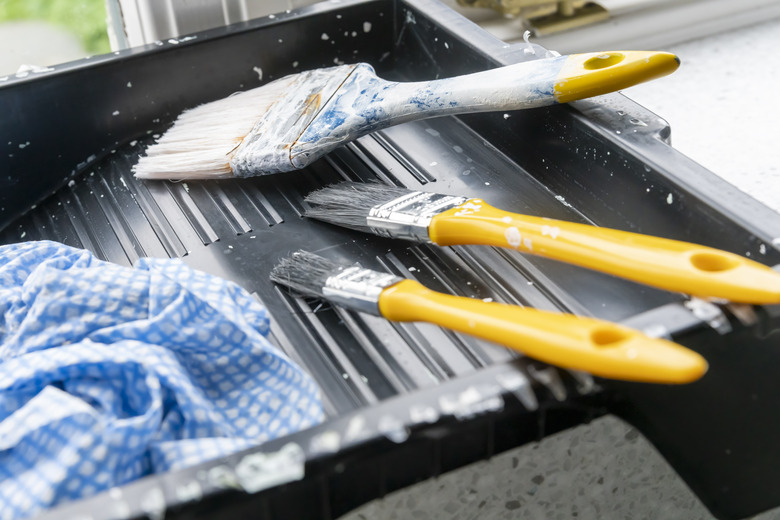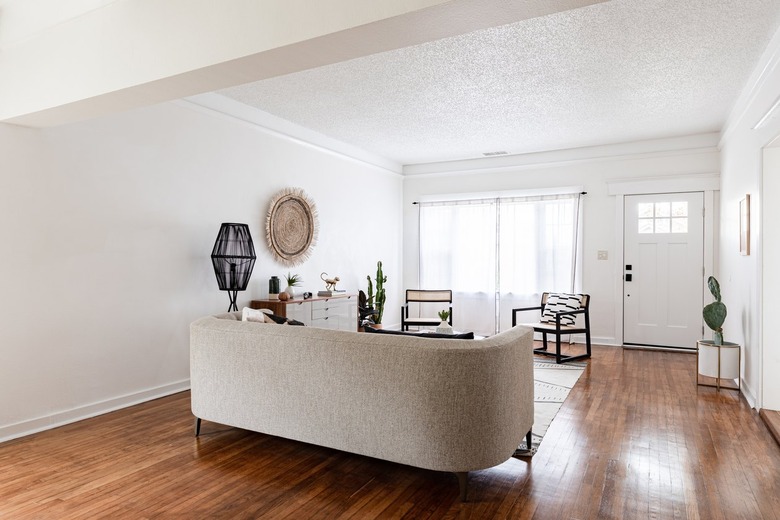Here's How Long It Takes To Paint A Room — From Cleanup To Curing
We may receive a commission on purchases made from links.
On average, it takes a professional painter about two to four days to paint a room from preparation to cleanup. This represents between eight and 16 hours of actual work time plus time spent waiting for spackle and paint to dry before moving from one step to the next.
It will likely take you, a DIYer, longer than it will a pro. There are several factors that will affect the time it takes to prep and paint a room, including the size and layout of the room, prep work, and the number of coats of paint you need (among other things). Consider these things when estimating the amount of time it will take you to complete your painting project.
Emptying the Room
Emptying the Room
When painting a room, the first step is to get to the walls, which means moving furniture. If you can, remove the furniture from the room completely. If you can't, move the furniture as close to the center of the room as you can get and cover it with a drop cloth to protect it from paint splatters. If you're painting the ceiling, make sure your furniture pile doesn't get so wide that you can't reach it.
Remember to remove curtain rods, light switch covers, outlet covers, hanging pictures, and everything else from your walls as well. Depending on how much furniture and how many outlets you have, clearing the room can take 30 minutes in a small to average-sized room and up to an hour in a large room with lots of outlets and pictures on the wall.
Repairing Your Surfaces
Repairing Your Surfaces
This part of the process can be time-consuming, but it's important to take your time and get it right. You'll want to begin by spackling and then sanding any nail holes or cracks in your wall. Different types of spackle are available, so you'll want to read the label on the product you're using. Generally, applying spackle should take less than 30 minutes, but you should allow one to five hours for it to fully dry, depending on how thick it is. That being said, if used lightly for nail holes or small dings, fast-drying spackle can be ready to sand in 15 minutes.
If you need to use wood filler or putty to replace missing parts of wooden windowsills or trim, drying time will again be a factor. Oil-based wood fillers require about 12 hours of drying time. Latex-based fillers generally dry in two to four hours. Humid weather can make both wood putty and spackle take longer to dry. Thick applications of both also take longer to dry, so work in thin layers when filling deep depressions. When planning your project time, it's generally best if you plan to apply wood fillers and spackle one day and sand them the next.
Preparing Your Surfaces
Preparing Your Surfaces
After the spackle or wood putty is completely dry, it's time to sand it to a smooth surface. Next, you'll want to vacuum up the sanding dust and give the walls a quick wipe down with a damp cloth to remove any remaining dust or dirt. You can then cover your floor with a drop cloth and use painter's tape to mask off the trim or other surfaces you don't want to paint.
Again, the time involved will vary based on how much sanding, wiping, and taping you need to do. You should, however, expect to spend about an hour on this. Any dust that you miss can get into your paint and mar the finished paint job, so your vacuuming job must be slow and thorough. The same goes for masking off parts of the room. A messy tape job won't deliver the nice, clean lines you want.
Cutting In Along Ceilings and Trim
Cutting In Along Ceilings and Trim
At long last, the prep work is finished, and you're finally ready to put some paint on the walls. Start by cutting in using a brush to paint where the ceiling and walls meet. You will also cut in where the walls meet the baseboards and trim and use your paint brush to paint the corners of the room. This whole process generally takes about two to three hours depending on the size of the room and how quickly you paint. Don't paint faster than you can do so neatly, as you'll want nice, clean lines when you're finished.
The bad news here is that if you prime and apply two coats of paint, you're cutting in time will actually be six to nine hours in total since you'll have to paint three times. The good news is that you don't have to wait for this paint to dry completely before you can start rolling paint onto your walls.
To make cutting in go faster, use a high-quality angled brush. Don't skimp on the paint brush quality here. You want a nice edge free of loose bristles when cutting in. Using a bench rather than a ladder can make the job go faster as well, as it will expand your reach so you can spend less time moving a ladder.
Rolling the Walls
Rolling the Walls
This is the one part of painting that goes quickly. Rolling paint onto the walls can take as little as an hour in a small room but may take two hours in a larger space. To make the job go more quickly, use a 14- to 18-inch roller rather than a short 9-inch one. It's also helpful to get an extension pole for your roller so you can reach from floor to ceiling without hopping on and off a ladder.
Wait four to six hours before applying a second coat of latex paint. Wait longer if you're using an oil-based paint, allowing a full 24 hours between coats.
Cleaning Up After a Paint Job
Cleaning Up After a Paint Job
Daily cleanup is easy, especially with some plastic bags. When you're finished painting for the day, always pour any unused paint back into the can and seal it. You can save yourself from cleaning your brush every day, however, by popping it into a plastic bag. This will keep the bristles wet and supple so you can use the brush again the next day. You can do the same with a roller by wrapping it in a plastic grocery bag to keep it wet and ready to use.
When you've finished the room, wash your paint tray, brush, and roller thoroughly. Latex paint will wash out with water, but you must clean up oil-based paints with paint thinner or similar chemicals. You'll also want to remove your tape and drop cloths. Cleanup can easily take about half an hour but shouldn't be a major ordeal.
Reloading the Room
Reloading the Room
Now that your project is finished, you're probably excited to get back into the room but take your time doing so. You can't wash or wet down paint for 14 days, and it takes up to 60 days to fully cure. You can move your furniture back into the room in a few days if you must but keep it well away from the wall. It's best to wait the full 60 days before reinstalling outlet covers, reinstalling light switch covers, or hanging picture frames and curtains. Always follow the directions given on your paint label since curing times can vary.
